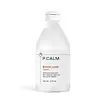What's inside
What's inside
 Key Ingredients
Key Ingredients

 Benefits
Benefits

 Concerns
Concerns

 Ingredients Side-by-side
Ingredients Side-by-side

Water
Skin ConditioningButylene Glycol
HumectantPropanediol
Solvent1,2-Hexanediol
Skin ConditioningNiacinamide
SmoothingPanthenol
Skin ConditioningEthylhexylglycerin
Skin ConditioningAllantoin
Skin ConditioningAdenosine
Skin ConditioningXanthan Gum
EmulsifyingDisodium EDTA
Polyquaternium-51
Skin ConditioningLaurus Nobilis Leaf Extract
MaskingPlantago Asiatica Extract
Skin ConditioningSodium Hyaluronate
HumectantHamamelis Virginiana Water
AstringentAmorphophallus Konjac Root Extract
HumectantSodium Guaiazulene Sulfonate
Carica Papaya Fruit Extract
Skin ConditioningLactobacillus Ferment
Skin ConditioningBambusa Vulgaris Extract
Skin ConditioningChamaecyparis Obtusa Leaf Extract
Skin ConditioningPinus Densiflora Leaf Extract
AntimicrobialThuja Orientalis Extract
AntimicrobialAcacia Seyal Gum Extract
HumectantCentella Asiatica Extract
CleansingMelaleuca Alternifolia Leaf Extract
PerfumingOryza Sativa Bran Extract
Skin ConditioningAsiatic Acid
Skin ConditioningAsiaticoside
AntioxidantMadecassic Acid
Skin ConditioningMadecassoside
AntioxidantWater, Butylene Glycol, Propanediol, 1,2-Hexanediol, Niacinamide, Panthenol, Ethylhexylglycerin, Allantoin, Adenosine, Xanthan Gum, Disodium EDTA, Polyquaternium-51, Laurus Nobilis Leaf Extract, Plantago Asiatica Extract, Sodium Hyaluronate, Hamamelis Virginiana Water, Amorphophallus Konjac Root Extract, Sodium Guaiazulene Sulfonate, Carica Papaya Fruit Extract, Lactobacillus Ferment, Bambusa Vulgaris Extract, Chamaecyparis Obtusa Leaf Extract, Pinus Densiflora Leaf Extract, Thuja Orientalis Extract, Acacia Seyal Gum Extract, Centella Asiatica Extract, Melaleuca Alternifolia Leaf Extract, Oryza Sativa Bran Extract, Asiatic Acid, Asiaticoside, Madecassic Acid, Madecassoside
Water
Skin ConditioningGlycerin
HumectantButylene Glycol
HumectantAlcohol
AntimicrobialBetaine
HumectantAdenosine
Skin ConditioningSodium Hyaluronate
HumectantHyaluronic Acid
HumectantTrehalose
HumectantBis-PEG-18 Methyl Ether Dimethyl Silane
EmollientAmmonium Acryloyldimethyltaurate/Vp Copolymer
PEG-60 Hydrogenated Castor Oil
EmulsifyingCaprylic/Capric Triglyceride
MaskingSaccharide Isomerate
HumectantSodium Polyacrylate
AbsorbentRhizobian Gum
Octyldodecanol
EmollientHydrogenated Lecithin
EmulsifyingCeramide NP
Skin Conditioning1,2-Hexanediol
Skin ConditioningCaprylyl Glycol
EmollientPhenoxyethanol
PreservativeParfum
MaskingEthylhexylglycerin
Skin ConditioningDisodium EDTA
Water, Glycerin, Butylene Glycol, Alcohol, Betaine, Adenosine, Sodium Hyaluronate, Hyaluronic Acid, Trehalose, Bis-PEG-18 Methyl Ether Dimethyl Silane, Ammonium Acryloyldimethyltaurate/Vp Copolymer, PEG-60 Hydrogenated Castor Oil, Caprylic/Capric Triglyceride, Saccharide Isomerate, Sodium Polyacrylate, Rhizobian Gum, Octyldodecanol, Hydrogenated Lecithin, Ceramide NP, 1,2-Hexanediol, Caprylyl Glycol, Phenoxyethanol, Parfum, Ethylhexylglycerin, Disodium EDTA
 Reviews
Reviews

Ingredients Explained
These ingredients are found in both products.
Ingredients higher up in an ingredient list are typically present in a larger amount.
1,2-Hexanediol is a synthetic liquid and another multi-functional powerhouse.
It is a:
- Humectant, drawing moisture into the skin
- Emollient, helping to soften skin
- Solvent, dispersing and stabilizing formulas
- Preservative booster, enhancing the antimicrobial activity of other preservatives
Adenosine is in every living organism. It is one of four components in nucleic acids that helps store our DNA.
Adenosine has many benefits when used. These benefits include hydrating the skin, smoothing skin, and reducing wrinkles. Once applied, adenosine increases collagen production. It also helps with improving firmness and tissue repair.
Studies have found adenosine may also help with wound healing.
In skincare products, Adenosine is usually derived from yeast.
Learn more about AdenosineButylene Glycol (or BG) is used within cosmetic products for a few different reasons:
Overall, Butylene Glycol is a safe and well-rounded ingredient that works well with other ingredients.
Though this ingredient works well with most skin types, some people with sensitive skin may experience a reaction such as allergic rashes, closed comedones, or itchiness.
Learn more about Butylene GlycolDisodium EDTA plays a role in making products more stable by aiding other preservatives.
It is a chelating agent, meaning it neutralizes metal ions that may be found in a product.
Disodium EDTA is a salt of edetic acid and is found to be safe in cosmetic ingredients.
Learn more about Disodium EDTAEthylhexylglycerin (we can't pronounce this either) is commonly used as a preservative and skin softener. It is derived from glyceryl.
You might see Ethylhexylglycerin often paired with other preservatives such as phenoxyethanol. Ethylhexylglycerin has been found to increase the effectiveness of these other preservatives.
Sodium Hyaluronate is hyaluronic acid's salt form. It is commonly derived from the sodium salt of hyaluronic acid.
Like hyaluronic acid, it is great at holding water and acts as a humectant. This makes it a great skin hydrating ingredient.
Sodium Hyaluronate is naturally occurring in our bodies and is mostly found in eye fluid and joints.
These are some other common types of Hyaluronic Acid:
Learn more about Sodium HyaluronateWater. It's the most common cosmetic ingredient of all. You'll usually see it at the top of ingredient lists, meaning that it makes up the largest part of the product.
So why is it so popular? Water most often acts as a solvent - this means that it helps dissolve other ingredients into the formulation.
You'll also recognize water as that liquid we all need to stay alive. If you see this, drink a glass of water. Stay hydrated!
Learn more about Water